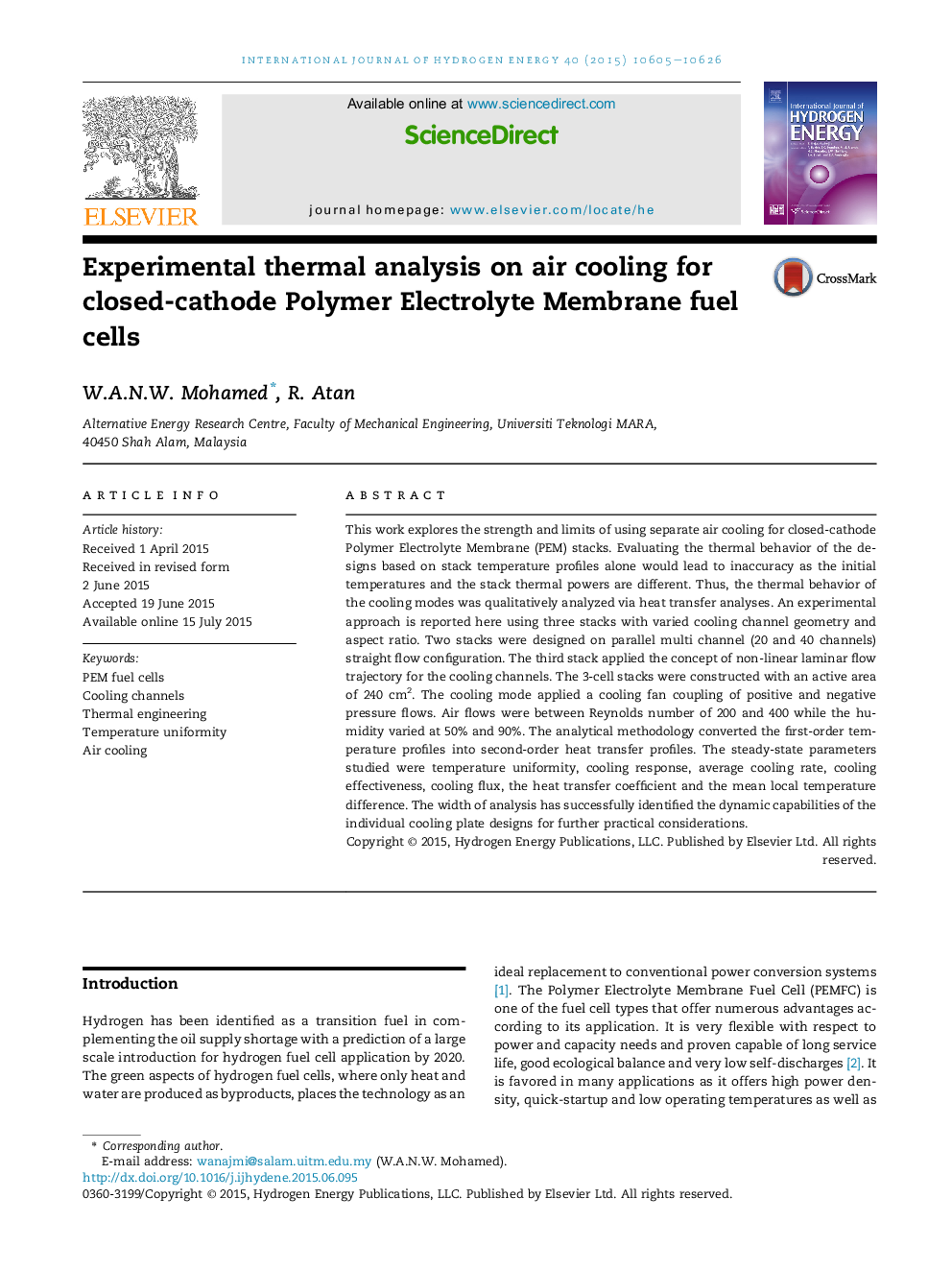| کد مقاله | کد نشریه | سال انتشار | مقاله انگلیسی | نسخه تمام متن |
|---|---|---|---|---|
| 1279112 | 1497440 | 2015 | 22 صفحه PDF | دانلود رایگان |
• Separate air cooling for PEM fuel cells was experimentally studied.
• Linear and non-linear flow configuration was applied in the cooling plate designs.
• A detail thermal analysis was obtained from the stack heat transfer profiles.
• Non-linear flow improves cooling flux with lower temperature uniformity index.
• Second-order thermal analysis derived from stack energy changes was applied.
This work explores the strength and limits of using separate air cooling for closed-cathode Polymer Electrolyte Membrane (PEM) stacks. Evaluating the thermal behavior of the designs based on stack temperature profiles alone would lead to inaccuracy as the initial temperatures and the stack thermal powers are different. Thus, the thermal behavior of the cooling modes was qualitatively analyzed via heat transfer analyses. An experimental approach is reported here using three stacks with varied cooling channel geometry and aspect ratio. Two stacks were designed on parallel multi channel (20 and 40 channels) straight flow configuration. The third stack applied the concept of non-linear laminar flow trajectory for the cooling channels. The 3-cell stacks were constructed with an active area of 240 cm2. The cooling mode applied a cooling fan coupling of positive and negative pressure flows. Air flows were between Reynolds number of 200 and 400 while the humidity varied at 50% and 90%. The analytical methodology converted the first-order temperature profiles into second-order heat transfer profiles. The steady-state parameters studied were temperature uniformity, cooling response, average cooling rate, cooling effectiveness, cooling flux, the heat transfer coefficient and the mean local temperature difference. The width of analysis has successfully identified the dynamic capabilities of the individual cooling plate designs for further practical considerations.
Journal: International Journal of Hydrogen Energy - Volume 40, Issue 33, 7 September 2015, Pages 10605–10626
